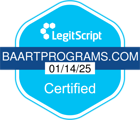Substance use disorder or SUD is another term for drug addiction. This is a medical condition that changes a person’s brain and alters their behavior. It makes the person lose control over the use of illegal or legal drugs or the medication they’re using.
Substance abuse may begin when a person experiments with drugs among peers in social situations. For opioids, drug addiction usually starts with exposure to medication when it is prescribed by a physician or by obtaining it from a friend who had a prescription for it.
A person is said to be addicted when they need higher amounts of a drug to feel high or to reach a state of ecstasy. As the use of the drug increases, it becomes more difficult to do without it. Any attempt to stop using the drug will result in intense cravings as well as physical illnesses or withdrawal symptoms.
What Are the Symptoms of Substance Abuse?
It’s quite easy to observe the signs and symptoms of drug addiction. They show up as behavioral changes, including:
- An intense urge to use a drug that blocks out any other thought
- Needing a greater quantity of the drug to have the same effect
- Making sure you have a steady supply of the drug even when you can’t afford it
- Not being able to keep up with work responsibilities or cutting back on recreational and social activities
- Using the drug even when you know it’s causing problems for you
How to Discover Substance Abuse in Family Members
It’s particularly important to be able to discover when your teenage children and other family members are involved in the unhealthy use of drugs. Some of the indicators include:
- Poor performance at school or work
- Lack of energy or motivation
- Red eyes
- Poor grooming and neglected appearance
- Efforts to stop other family members from entering their room
- Frequent requests for money without any reasonable explanation
Additionally, you may discover that money is missing. You might notice that other items turn up missing as well if your loved one sold them to get money for drugs.
Signs of Opioid Painkiller Abuse
Opioids are pain-relieving drugs such as heroin, hydrocodone or fentanyl. With the increasing addiction to opioid prescription pain medicine, it’s vital to know the signs and symptoms of an opioid use disorder, which include:
- Poor attention and memory loss
- Drowsiness, sedation or agitation
- Decreasing sense of pain
- Poor awareness of people and surroundings
- Problems with mental and physical coordination
- Depression and confusion
- Needle marks — for those injecting the drug
- Runny nose — for those sniffing the drug
- Constipation
Contact Your Local BAART Program Center for Help
If you or a loved one are experiencing drug use that’s gotten out of control, you need to seek help immediately. The earlier you do so, the better your chances of experiencing long-term recovery.
At BAART program centers, you or your loved ones can get help overcoming opioid drug addiction. Contact your local BAART program center now by calling your closest location or by filling out the contact form on our website. We’re ready to schedule an appointment with you.



